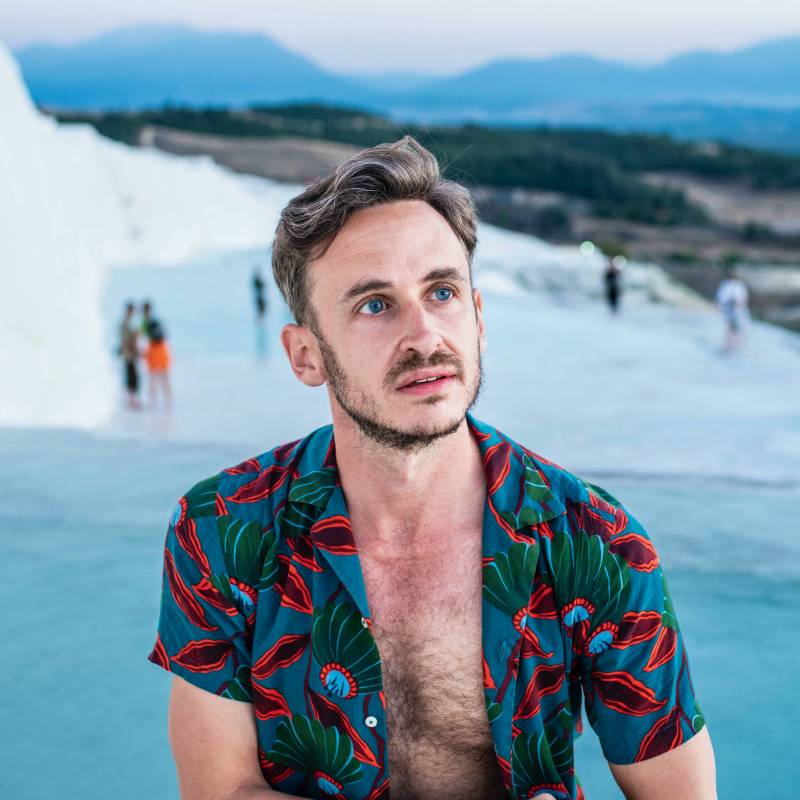Hiking on the Best Glaciers in Alaska: Take an Adventure Cruise
By Robert Schrader | Published on March 26, 2022
As I walked on top the slick, white ice of one of the best glaciers in Alaska to tour, one thing surprised me in particular: how safe I felt. Not just because of the boots I was wearing or the guides I was with but because of how the glaciers themselves held me up — their strength humbled me.
"I know this may seem counterintuitive," my guide said, as he motioned for me to come toward him like a parent coaxing a toddler taking their first steps, "but you should just walk normally. Your crampons — those spiky contraptions I gave you to put under your boots — are doing the work for you."
It was an exhilarating journey to get there: Two hours by car from Anchorage and then an hour hiking up a slippery rock trail until it was time to walk on (frozen) water. Once I got over my trepidation, which was understandable given that I was trekking across a massive, ancient sheet of ice, being on top of Matanuska Glacier did feel strangely natural, like it was something I could do every day if I had to.

Breathtaking Alaska Glacier Tours On Your Adventure
Another surprising thing about take a tour on Alaska glaciers hikes, whether you visit Matanuska from Anchorage or Kennicott Glacier farther east past Valdez, is how dramatically the ambiance changes in the moments before you reach the ice. As adventure travelers seeking glacier hiking trails will see, the best time is during season which is only available between late May and early September (in summer, more or less). The beginning of the trailheads will seem lush and temperate; on some days even a bit warm.
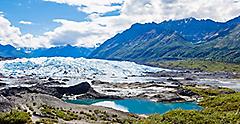
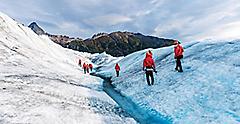
It's humid, too, which is why I was glad I heeded the tour company's advice and wore quick-drying, waterproof clothing. If the sweat I worked up getting to the glacier had stayed on my skin and in my clothes, the chill I felt when the landscape turned to tundra might've been debilitating instead of exhilarating. (Some of my fellow travelers also brought a change of clothes — a piece of advice I did not heed but wish I had!)
Before I took my trek, I feared, since it was summer (and since climate change is accelerating), the glacier would've shrunk past the point where it seemed majestic. While this might be true if you look upon it from a distant perspective, it wasn't the case up close. No matter which of the best glaciers in Alaska you trek, you're bound to be amazed by their immensity. Matanuska Glacier, for example, is smaller in summer than its 27-by-4-mile footprint in the depths of winter, but it's still breathtakingly large.
Review Local Safety Guides When Hiking Alaska Glaciers
Safety was a priority for our tour guide. Members of my group brought hiking poles, some for physical stabilization and some to get over the mental block of walking on ice. We also wore helmets, so if we fell (or if a piece of ice broke off and fell on us), our heads were protected. Plus, the helmet provided an extra layer of protection for our faces, which we slathered in SPF 50 sunscreen. It wasn't especially bright that day, with wisps of clouds frequently blocking out the full brunt of the sun, but glaciers (like most light-colored things) reflect the sun's rays. I got slightly burned in spite of the precautions I took. I don't want to think what would've happened had I scaled Matanuska Glacier unprepared. Ditto for sunglasses: The term "snowblind" applies to ice as well!
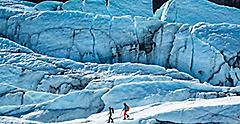
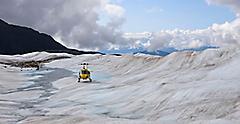
One thing that makes Matanuska Glacier unique among Alaska glaciers is that it's accessible by car. In fact, it's the largest glacier in the U.S. with that designation. Not everyone takes advantage of this convenience, however. Helicopter tours are available, which allow you to skip the rockier, less wintry portions of the ice fall trek and get directly to the glacier itself. They also allow you to conserve some of your energy and arrive more relaxed.
"It's jarring — in a good way," my guide explained when I asked him what it was like accessing the glacier via chopper rather than on your own two feet, "but you lose the sense of accomplishment. Not to mention, a few hundred more dollars!"
He also explained, however, that since I love photography, I might enjoy the opportunity to get an aerial view of the glacier, whose size (even in the summer when it's at its most shrunken) is only apparent when you're able to see the whole thing. "Next time," I sighed through my smile, which beamed as brightly as the sun as we finally reached the highest point of our trek. We sat down for lunch before the journey back down.
I wasn't very hungry — I never am when I hike — so I spent most of our brief break asking questions. "I'm sure you've trekked most of the best glaciers in Alaska. I won't ask you to name a favorite, but I will ask: Is it worth it to visit multiple ones?"
I could guess how he was going to answer, given discussions I'd had with previous such guides, like my skydive instructor in New Zealand, who spoke of each of his thousands of dives as if they were equally transcendental. However, this man surprised me with the frankness and sobriety of his response.
"You have to be prepared to slow down and put the energy into seeing the differences between the glaciers," he explained. "This gets easier the more you visit and the more the novelty wears off. You're less shocked and awed by the fact that you're walking on ice and more attuned to the unique fauna, to the size and color of the ice, to the way the air feels, and the way the dirt smells."
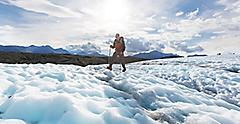
Magic On Alaskan Glacier Cruise Tours: Oh, The Places You'll Go
There's also the context into which you place the glacier. If you take an Alaska glaciers tour to the Exit Glacier, for example, you can pair a morning marveling at the towering turquoise ice walls of the glacier with an afternoon of whale watching in adjacent Kenai Fjords.
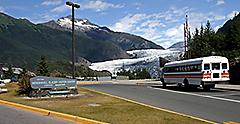
Another spot that appeals to me is Mendenhall Glacier, near the Alaskan capital of Juneau. It isn't known to be as majestic as Matanuska (or the even more spectacular Spencer Glacier, with its half-mile-high walls of ice), due to its southerly location in a more temperate part of the state. However, it would be interesting to pair with experiences amid the temperate rainforests of southern Alaska and to contrast with the relative urbanization of Juneau, as well as the indigenous culture around the city. Moreover, you can actually ride a public bus to Mendenhall Glacier, a quotidian transportation method I would imagine makes the ice sheet all the more surreal when you finally arrive there.
There's also the possibility of Alaska glacier cruises, for days (or years — I'm not getting any younger!) when I'm not feeling as energetic or ambitious. Plenty of Kenai Fjords cruises offer great views of Exit Glacier; you can also visit Portage Glacier by boat on a day trip from Anchorage, assuming you don't stay in a rustic lodge nearby or even camp if you're feeling especially adventurous.

Then again, the best glacier in Alaska is whichever one you happen to be trekking on, which takes us back to where we started: The surreal feeling of walking on ice. It's thrilling; as long as you take all safety precautions.
And it's humbling. Not all of these ancient ice sheets will be around forever, maybe not even for the rest of our lives. As I descended down the glacier, thoughts swirled through my mind like the clouds overhead. The meltwater dripped off the ice as we neared the rocky path that had led us to the glacier. I thought: What if this is the last time I have this experience?
If you're on the fence about taking a hike on an Alaska glacier tour yourself, don't be — and not just because of how quickly some of them are melting. You may only live once, but there's no limit to the emotions and sensations you can feel, to the colors and textures of the earth you could have the privilege of experiencing, while you're here.

